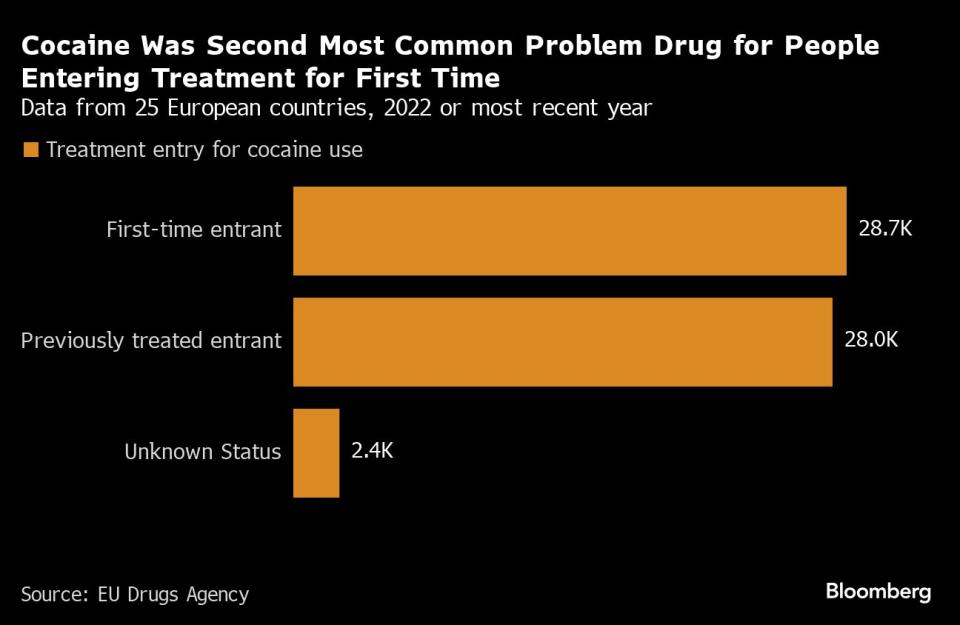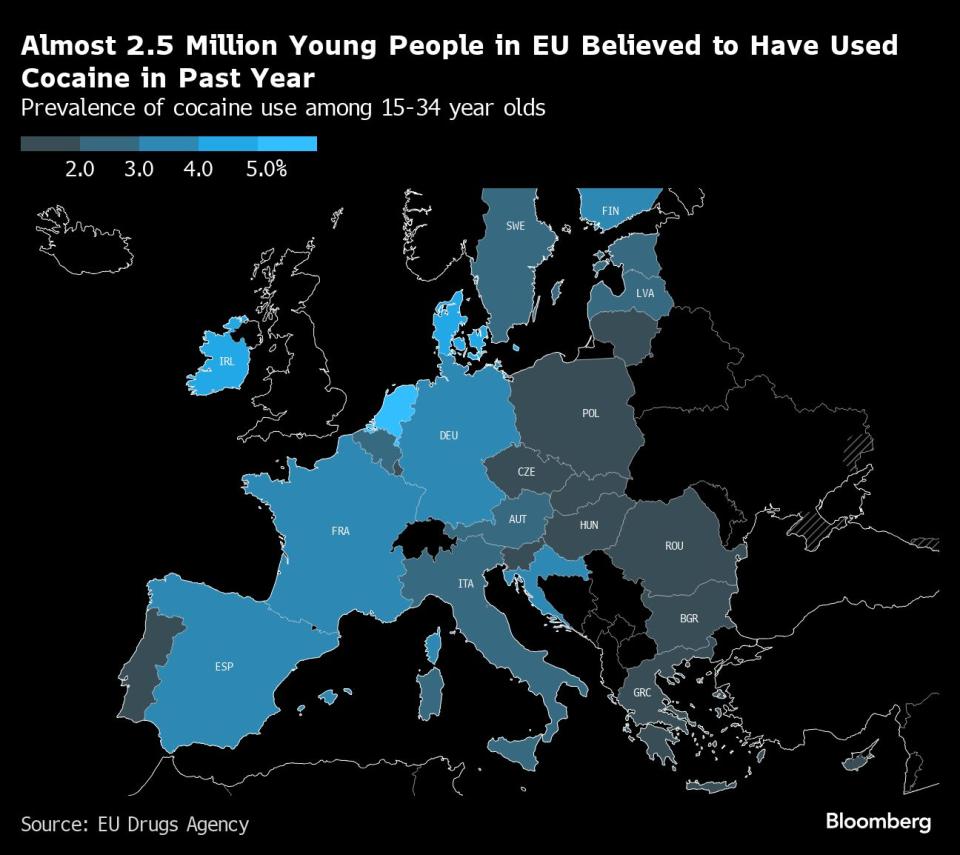Cocaine Surge Is Public Health ‘Time Bomb,’ EU Drugs Chief Warns
(Bloomberg) -- Europe needs to brace for the costly public health consequences of higher drug use in the coming years as it continues to battle a massive inflow of cocaine and the resulting spike in trafficking-related violence, warns the head of the newly revamped European Union drugs agency.
Most Read from Bloomberg
Biden Struggles to Contain Mounting Pressure to Drop Out of Race
China Can End Russia’s War in Ukraine With One Phone Call, Finland Says
Kamala Harris Is Having a Surprise Resurgence as Biden’s Campaign Unravels
Alexis Goosdeel said in an interview that it will likely take at least two to three years to see the broader impact on Europeans’ health, which would put further pressure on countries’ budgets.
“That’s potentially a time bomb in terms of impact on public health and the budgets of the member states for the treatment system,” Goosdeel said. “The difficulty being that there is no way for the moment to estimate what would be the size of the dimension of this impact.”
A public health expert by background, Goosdeel has run the EU’s drugs agency since 2016, after first joining in 1999. He previously founded a Belgian public health NGO focused on drugs harm reduction.
During Goosdeel’s tenure, the EU has seen a vast influx of cocaine into the bloc, along with an increase in seizures. Analysis of municipal wastewater for cocaine residue has shown clear evidence of increasing consumption, according to the agency’s 2024 Drugs Report, with an increase in 49 out of 72 cities in 2023 compared to 2022. Thirteen held constant and 10 saw a decrease.
Goosdeel’s organization — newly renamed the EU Drugs Agency from the European Monitoring Centre for Drugs and Drugs Addiction — took on an expanded mandate from the bloc on Tuesday in response to increasing challenges from drug trafficking and related violence. It will develop bloc-wide threat assessment capabilities and develop an expanded alert system to provide information on outbreaks and treatments, including directly to hospitals.
Cocaine was the second most common problem drug among people entering specialist drug treatment for the first time in their lives in 2022, cited by an estimated 29,000 people or 21% of first-time entrants, while the drug was involved in 23% of drug-induced deaths.
The report found that there is a time lag of 13 years between first cocaine use and first treatment for cocaine-related problems, leading Goosdeel to suggest that the full public health impact of the rise in consumption is still to come. The agency’s annual report also warned that in many countries there is “a lack of investment in drug prevention work or evidence that resources are not being used efficiently.”
Another major concern comes from the emergence of ‘new psychoactive substances,’ something the drugs agency has been monitoring for the past 27 years. A new substance is being detected around every two weeks.
While heroin remains Europe’s most commonly used illicit opioid, the emergence of new synthetic opioids has raised fears among policymakers, especially in light of the ongoing challenges the US has faced in tackling an opioid crisis that kills tens of thousands each year.
EU countries reported a record amount of cocaine for the sixth year in a row in 2022, the latest for which there is bloc-wide data, at 323 metric tons. Early 2023 data posts to a continuation of the trend, with a fresh record at the Port of Antwerp-Bruges. A rising tide of drug-related violence that has accompanied the rise in seizures spurred an action plan from the EU in 2023, with a particular focus on securing Europe’s ports.
Most Read from Bloomberg Businessweek
Dragons and Sex Are Now a $610 Million Business Sweeping Publishing
The Fried Chicken Sandwich Wars Are More Cutthroat Than Ever Before
For Tesla, a Smaller Drop in Sales Is Something to Celebrate
©2024 Bloomberg L.P.




